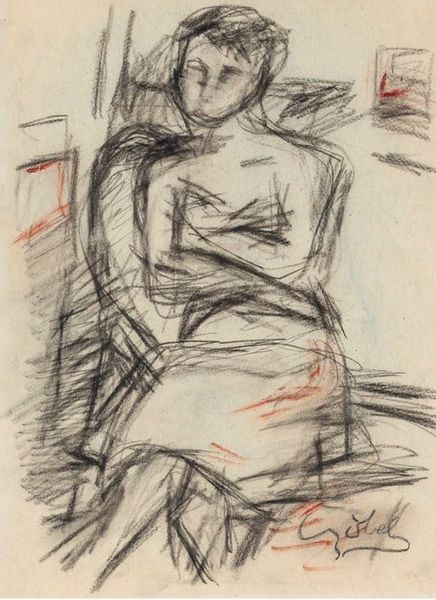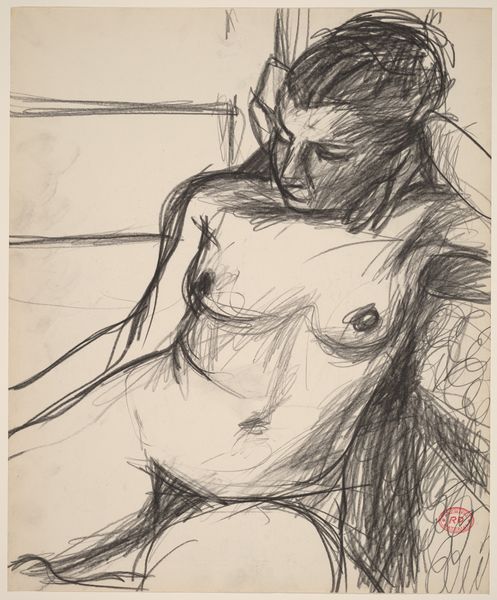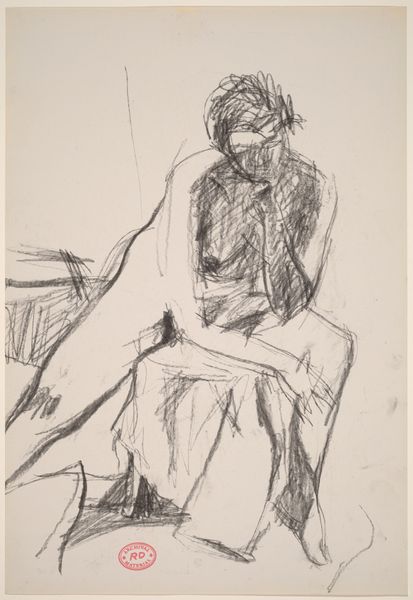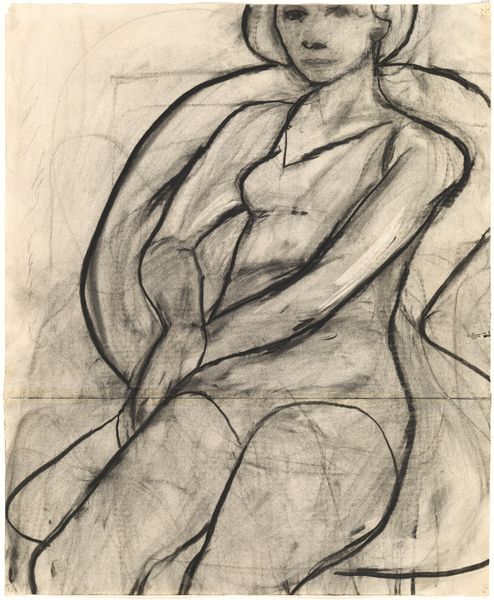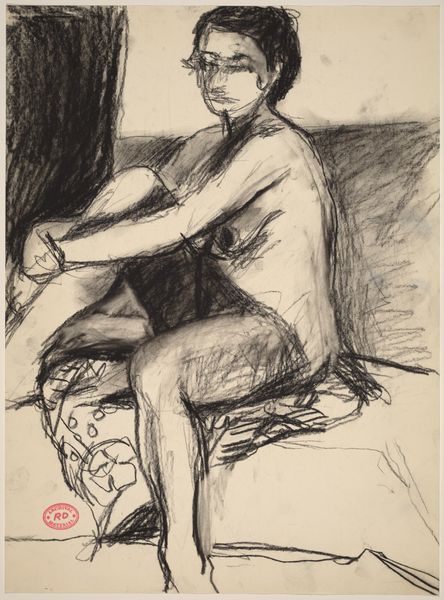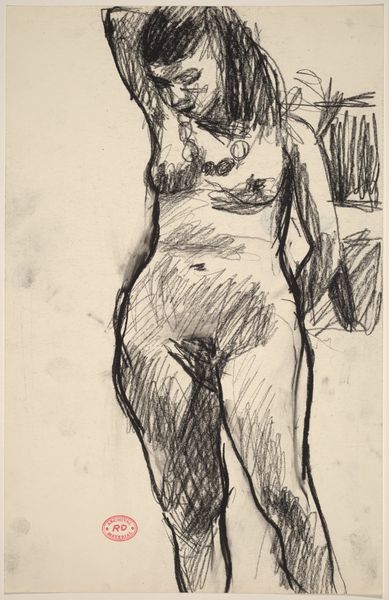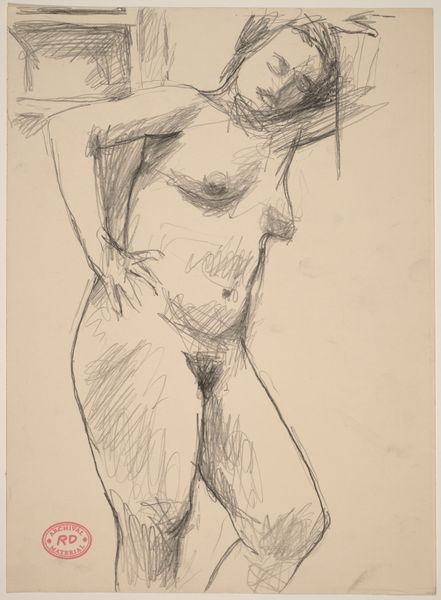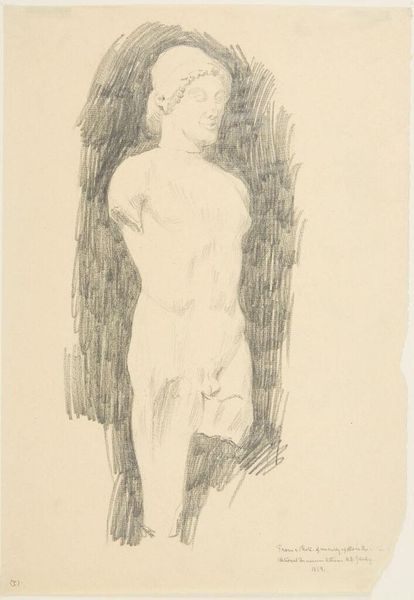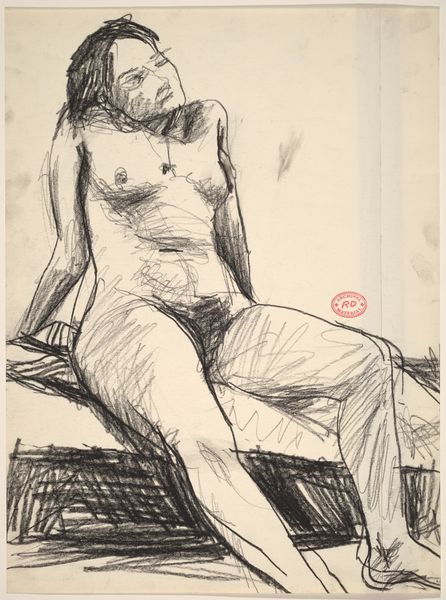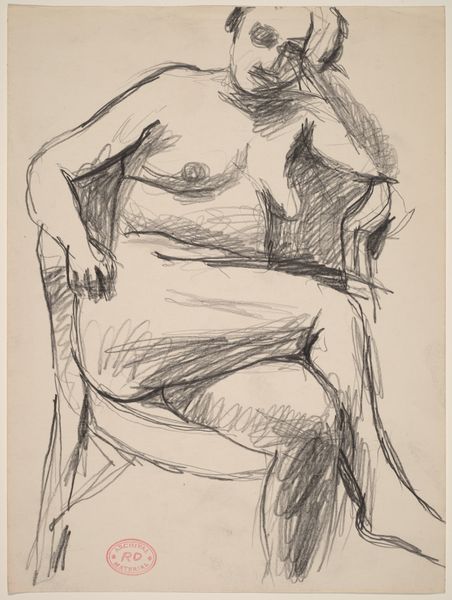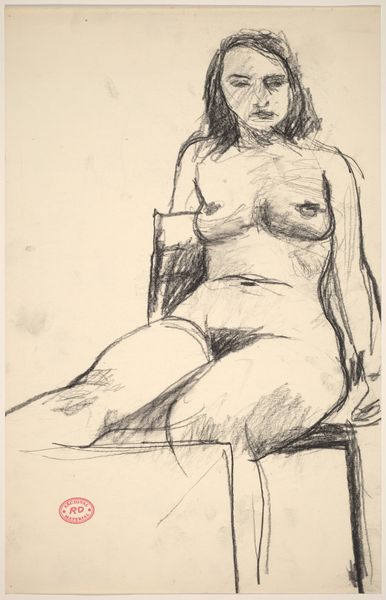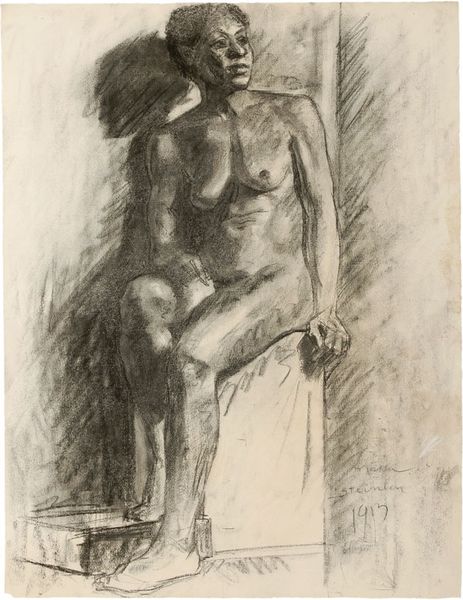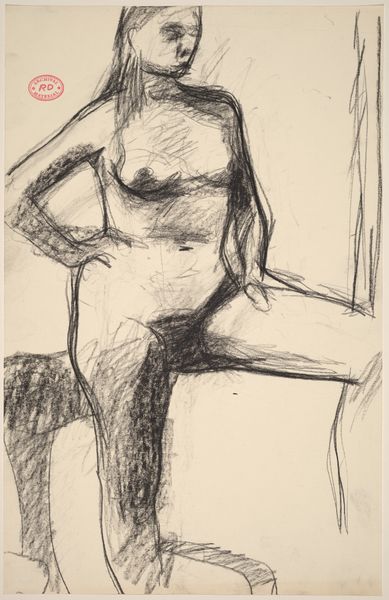
drawing, graphite
#
portrait
#
drawing
#
figuration
#
expressionism
#
graphite
#
nude
Copyright: Bela Czobel,Fair Use
Art Historian: We’re looking at "Akt," a graphite drawing rendered on paper, attributed to Béla Czóbel. The work, whose dimensions are 31 by 24 centimeters, portrays a nude figure. Curator: My first thought is of speed and raw energy; there is a frenetic application of the graphite pencil on the page, creating this hazy atmosphere surrounding the woman’s body. I can practically hear the scraping of the graphite against the textured paper. Art Historian: That frenetic energy makes sense when viewed through the lens of Expressionism. Czóbel was a Hungarian painter and graphic artist who came to prominence in the early 20th century and who was linked to various avant-garde movements; that rapid line work may serve as a manifestation of inner emotion. Curator: Yes! Expressionism truly celebrates the immediacy of mark-making. Beyond style, look at how the labor is apparent; the density of lines accumulates in the shadowy areas, while elsewhere, he leaves the paper bare and visible. No attempt to hide the labor here! Art Historian: Given the rise of psychoanalysis, the artistic focus at the time increasingly shifted towards probing beneath the surface. In that milieu, nudes became less about classical ideals and more about conveying vulnerability, or even psychic disturbance. Curator: Right, and even the chosen materials play a crucial part! The humble graphite pencil isn't trying to be precious; it’s easily accessible, affordable. That puts it in stark contrast to more formal mediums, like oil paints. There is also a sense of accessibility offered through the material itself. Art Historian: Yet, showing a nude in art is never quite “accessible,” is it? Czóbel’s image is an interesting reflection of evolving norms of nudity in art, particularly with considerations of social mores. Whose bodies are considered legitimate subject matter for art? Curator: The lines are blurred on so many levels. Thinking of his practice, I imagine the ease with which he could produce these drawings; and it makes you consider their inherent worth, from artistic labor to market value. Art Historian: Absolutely, Béla Czóbel, who spent much of his life abroad in artistic hubs like Paris, navigated the shifting cultural expectations. We can find him questioning these notions. This piece, therefore, presents more than just a nude study. Curator: True! "Akt" isn’t just about representing a body; it captures a moment in time. And, perhaps a certain discomfort of the body rendered through visible, even insistent lines and labor. Art Historian: I’ll definitely consider this drawing in terms of Czóbel’s broader body of work now and see how his drawings engaged with issues of display, intimacy, and even voyeurism during that period.
Comments
No comments
Be the first to comment and join the conversation on the ultimate creative platform.
